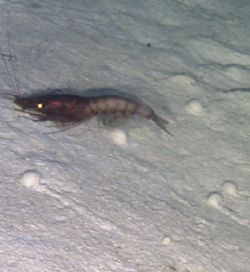 A new discovery from the world beneath the ocean waves: a single-celled organism the size of a grape that rolls along the sea-bed like some sort of aquatic tumbleweed. [image credit Sönke Johnsen; borrowed from linked article]
A new discovery from the world beneath the ocean waves: a single-celled organism the size of a grape that rolls along the sea-bed like some sort of aquatic tumbleweed. [image credit Sönke Johnsen; borrowed from linked article]
The researchers said that it’s possible that the sea grape may be a descendent of the creature that made the tracks that are well known from the fossil record. Or – like the tuatara or the coelacanth – the protist could be a living fossil, that has changed little for as many as 1.8 billion years.
I.8 million years is a long time – time enough, apparently, to allow even rocks and minerals to evolve. [via SlashDot]
 Human life expectancy keeps increasing steadily, thanks not only to medicine and technology but to social and cultural progress, too. Potential next steps on the ladder could well come from both camps: an example from the med-tech side might be
Human life expectancy keeps increasing steadily, thanks not only to medicine and technology but to social and cultural progress, too. Potential next steps on the ladder could well come from both camps: an example from the med-tech side might be 

 National Geographic News
National Geographic News